One of my dissertation goals for the summer is to wrap up outstanding research. This includes finishing secondary readings, processing archival documents I haven’t read yet, and undertaking any final research trips. During the last week of June, I took a big step toward completing on-site research by spending a week in New York. Let’s take a look at what I did there.
Research Trip Objectives
I traveled to New York to wrap up research on Chapter Two, which focuses on the Met’s Neighborhood Circulating Exhibitions Program. This is the third time I’ve traveled to the city for this chapter, with each trip having a different focus. On my first excursion in 2021, I visited a commemorative exhibition to see how museum staff have retrospectively presented the program. After the archives reopened, I returned in 2022 to peruse the Museum’s files on the exhibitions.
This time, my goal was to see if I could learn more about visitor perspectives. I’m familiar with the Met’s thoughts on the program, both historical and contemporary. Now I wanted to see how visitors reacted to the shows beyond their attendance numbers in the gallery.
Revisiting Old Research Sites
One of my stops was the Met archives. Instead of staff correspondence and checklists, this time I focused on the museum’s collection of historical newspaper clippings. I’ve come across candid reactions to outreach shows in newspaper articles before, so I wanted to see if the clippings here had any similar reactions. I was especially interested in hearing from the students who attended the exhibitions, as they were one of the program’s target audiences.
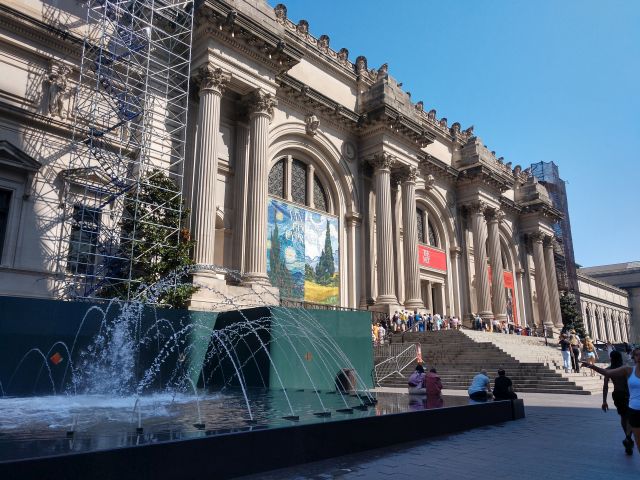
Ultimately, I didn’t find any quotations from students. Yet I did find other useful information, from where some of the exhibitions were displayed within their respective sites, to potential visitation patterns. I also found an interview from a teacher at one of the host sites, and her interpretation of one of the shows emphasized the variety of ways in which people can react to exhibitions.
New Research Trip Repositories
In addition to revisiting familiar archives, I also encountered new repositories through the New York Public Library. I perused two different collections. The first was the papers of the Hudson Park Branch Library, a frequent site of the Neighborhood Circulating Exhibitions. I wanted to see whether they had any materials in their files relating to the shows, including visitor reactions.
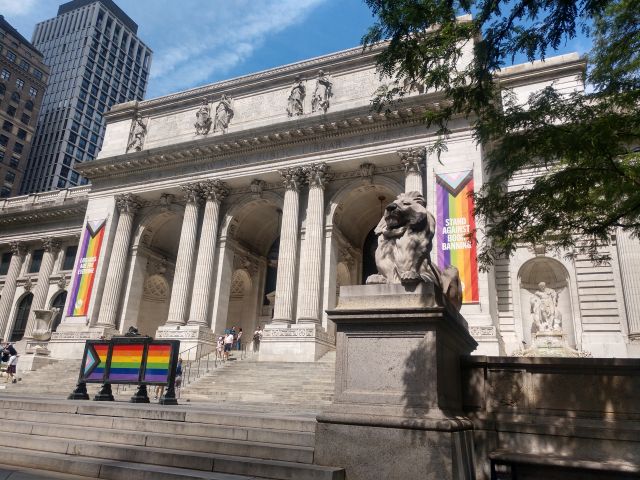
The second group consisted of yearbooks and literary magazines from some of the high schools that hosted the exhibitions. As an undergraduate on work-study at Lake Forest’s Archives and Special Collections, I used to peruse the college’s old yearbooks, and I remember them presenting more informal perspectives on the school. By looking at these old high school publications, I wanted to see if there were any traces of student reactions to the shows.
As it turns out, I didn’t find any, but I did learn about the things that interested them. I perused stories about immigration journeys, summer trips abroad, career aspirations, and social anxieties. I also saw prints, drawings, and even photos of window displays that students had designed. What I did not see were any poems or stories dedicated to the exhibitions, at least not directly, and that was telling.
The City as Archive
During my junior year, I spent a semester in Europe, with two months in London and two in Florence. The professor who taught the visual culture course in London was adamant about getting into the city itself to learn about its history. She argued that walking the streets or exploring the refuse along the Thames were valuable research methods alongside archival work.
I thought about that professor’s advice as I made my NYPL requests. The library’s in-person policies for verifying cards meant I couldn’t access my materials until Wednesday. Since my Met appointment wasn’t until Thursday, that meant Tuesday was open.
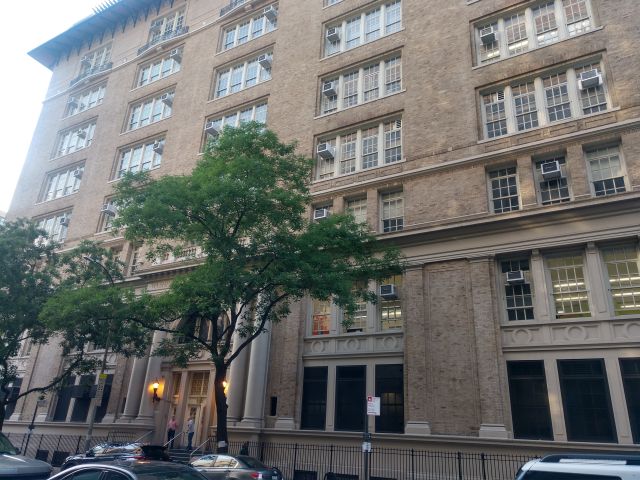
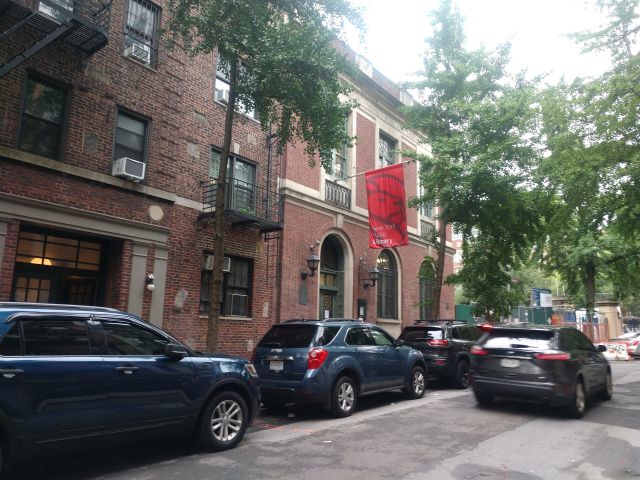
So I decided to seek out some of the sites the Neighborhood Exhibitions visited. I checked my map, and saw that two of its most frequently-visited sites, Washington Irving High School and Hudson Park Library, were within walking distance. In addition to being documented through historical photographs, both sites had remained largely unchanged, so I had a good possibility of encountering the actual spaces where the exhibitions appeared. On Tuesday morning then, I set out and walked to both of them.
When I visit New York, I’m usually focused on getting to my destination and staying out of other people’s way. On this occasion though, I made a point of looking around me. I studied the buildings as I walked, noticing their different architectural styles and scale. I imagined which ones would have been present during the 1930s and 1940s, and what functions they might have served. Remembering my experiences with riding the “L” in Chicago, I tried to visualize the elevated trains that used to run above the city streets, and the kinds of cars that would have driven along the roads. I tried to envision the city’s sounds, smells, and languages.
On-Site Visits
Eventually, I reached both sites. Washington Irving was closed (it is summer, after all), but I did briefly see the lobby, where at least one exhibition was staged, before being turned away. Hudson Park was open, however, and I went inside.
Using the archival photos as my guide, I walked through the library in search of its exhibition space. I visited the children’s gallery on the second floor, as well as the main reading room on the first floor. Eventually, I found the library’s exhibition gallery on the main floor. Since there were people working in the space, I didn’t spend much time there. While I thought the space resembled what I saw in the photos, it wasn’t until later that night, while studying the historical pictures again, that it fully clicked.
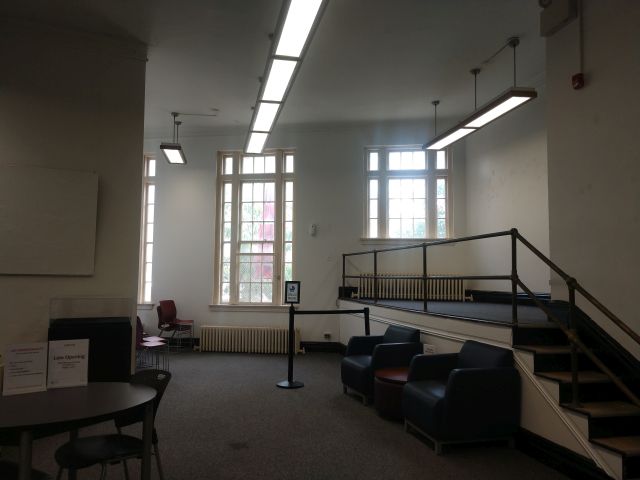
After wrapping up my archival work on Friday, then, I returned to the library with the intention of better documenting the space. There weren’t as many people there this time, so I was able to take more photos without disturbing anyone. Remembering the historical preservation course I took in college, I then sat down in the space and wrote my observations. Looking around the room, I noticed all the patches and repairs along the walls, evidence of frequent exhibitions. I recognized the window trim and radiators, as well as alterations such as the removal of windows or changes in paint color. I experienced the gallery as a space, not just an archival image.
Making Time for Fun
Although this was a working trip, I also made time for fun. After my impromptu on-site visits, I went to MoMA to see their current exhibition on Georgia O’Keeffe, To See Takes Time. I like O’Keeffe’s work well enough, but I really went because I love works on paper, which was the focus of the show. As I walked through the exhibition, I realized that my creative practice shares a lot of interests with hers, particularly taking observations from daily life and rendering them into abstractions. Not that my work is on O’Keeffe’s level, but it was illuminating to note the intersections.
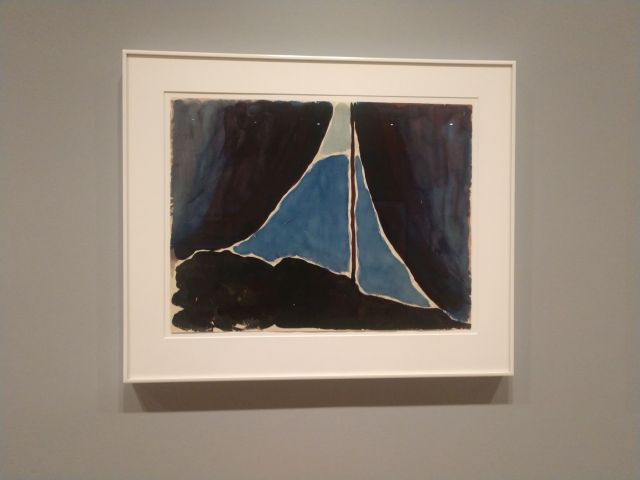
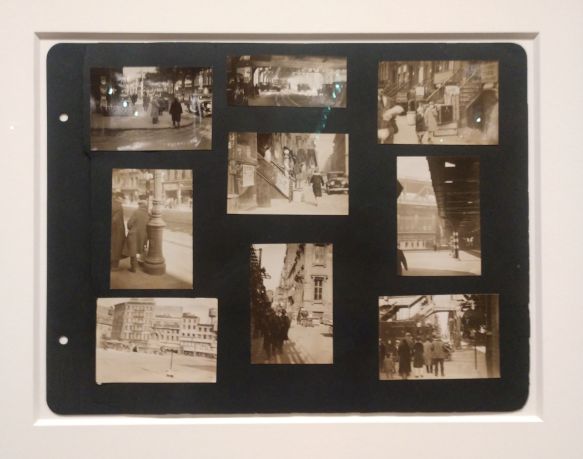
On Friday, after wrapping up my observations of Hudson Park, I went to the Met. Since it was evening and my attention span limited, I visited one small show, Berenice Abbott’s New York Album, 1929. It showcased an album of informal photographs Abbott had taken of the city in 1929, and would help inspire her monumental series of the 1930s, Changing New York. I initially had gone because I knew Abbott’s photographs had comprised one of the Exhibition Section’s shows for community art centers. As I made my way through the photos however, I discovered another benefit. They helped me better visualize New York as it might have appeared during the time of the Neighborhood Circulating Exhibitions. And most importantly, of course, they were great photographs and I really enjoyed looking at them.
Research Trip Results
In some ways, I did not find what I was looking for on this trip. I did not encounter direct evidence of student reactions to the Neighborhood Circulating Exhibitions. I still don’t know what they thought of them. Yet silences are also revealing, and the lack of reactions, of responses, do offer insight into how audiences felt, or perhaps didn’t feel, about these shows. Thousands of visitors may have attended the exhibitions, but whether they managed to leave a lasting impression remains debatable.
Arguably the most valuable part of my research, however, was the time I spent in the city. While visiting one site doesn’t magically give me a comprehensive understanding of the spatial qualities of the Neighborhood Circulating Exhibitions, spending time in the library’s gallery did enrich my understanding of the program. Coupled with the archival work I did at the NYPL, moreover, I got a better understanding of the types of spaces the exhibitions visited.
Additionally, walking to these sites helped me better appreciate Manhattan, or at least a tiny part of it. Although I’ve been here many times, I’ve never felt as attached to New York as Chicago or even London because it’s always seemed so imposing and detached to me. In walking to the exhibition sites, however, where the buildings were smaller and more domestic in focus, I started seeing a more intimate, human-scaled city. One afternoon on foot doesn’t make me an expert on New York, but it definitely enriched my perspectives.
The Next Research Trip
So that’s my New York trip. While I didn’t necessarily get the results I wanted, it ultimately proved a worthwhile endeavor, even if I was wearing a mask much of the time due to smoke haze. But that’s just the first of two research trips I’ve undertaken this summer. Next week, we’ll talk about my long-awaited visit to the National Archives.